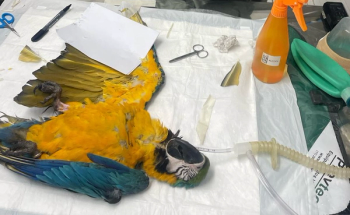
- dvm360 June 2020
- Volume 51
- Issue 6
COVID-19 and the polio parallel
The coronavirus pandemic has generated fear throughout the world, for many of the same reasons the polio epidemic did at one time.
Like much of the world, my family is dealing with the realities of a highly contagious virus that until a few months ago none of us had heard of and almost no one could envision. We have no available prophylaxis, no known treatment and no parallel clinical experience; among our only defenses is the seemingly archaic method of quarantine.
Be it government enforced or self-initiated, a quarantine is a restriction on the movement of people, animals or goods to prevent the spread of disease. Sometimes referred to as medical isolation, quarantine isolates those potentially exposed to but not necessarily infected by a communicable disease.
Quarantines have been applied for centuries in the face of everything from bubonic plague, leprosy and cholera to measles, chicken pox, diphtheria, scarlet fever and even syphilis. Isolation was at one time the best management we knew.
When I was a youngster, polio meningitis or encephalitis was perhaps the greatest fear among parents for their children. Two forms occurred: nonparalytic (also called abortive) polio and the much more damaging paralytic polio. The first major polio epidemic in the United States dates back to 1894 in Vermont, with 132 cases reported.1 In 1916, the country saw more than 27,000 cases of polio and 6,000 deaths from the disease.1 At its peak in the 1940s and 1950s, polio would paralyze or kill over half a million people worldwide every year.1
I recall a number of kids early in my childhood who developed paralysis, several of whom never came back to school after being sick. The fear of paralysis and death from polio held the country hostage for over a decade. People lived in a shadow of fear.
Today the fear of COVID-19 infection is everywhere, and the parallels to polio are striking. Much as is the case with our latest nemesis, many people infected with polio experienced only mild symptoms; up to 95% had no symptoms at all. The non-paralytic form of polio frequently only lasted 7 to 10 days and did not lead to paralysis. In fact, less than 1% of all polio cases were paralytic. Both forms resulted initially in flu-like symptoms, which—not unlike coronavirus—included headache, sore throat and fever, among others. Needless to say, even though the symptoms were relatively minor in most cases and patients recovered fully with about a week, parents were terrified. The vast majority of people who contracted the disease didn't even know they had it.
Most of the diseases that people feared throughout history have been eradicated as a result of the development of safe and effective vaccines. One day, hopefully very soon, the pandemic that has become our global scourge will also be relegated to the medical history books. In the meantime, keep your distance, wash and disinfect your hands, and avoid contamination of your food.
Dr. Mike Paul is the former executive director of the Companion Animal Parasite Council and a former president of the American Animal Hospital Association. He is currently the principal of MAGPIE Veterinary Consulting. He is retired from practice and lives in Anguilla, British West Indies.
References
- Lewis K. The story of polio. Arizona Department of Health Services website: https://www.azdhs.gov/documents/ preparedness/epidemiology-disease-control/infectiousdiseases-training/2018/story-of-polio.pdf. Published July 25, 2018. Accessed May 29, 2020.
Articles in this issue
over 5 years ago
Setting the table for serviceover 5 years ago
How will COVID-19 transform veterinary practice?over 5 years ago
The other heartworm patientover 5 years ago
An open letter to my fellow 2020 graduatesover 5 years ago
PrideVMC announces student award winnersover 5 years ago
FDA approves generic topical parasiticide for catsover 5 years ago
Survival mode: practicing veterinary medicine during a pandemicover 5 years ago
Final words on the ‘whitest profession’over 5 years ago
Is a ‘hero award’ appropriate for front-line veterinary staff?Newsletter
From exam room tips to practice management insights, get trusted veterinary news delivered straight to your inbox—subscribe to dvm360.






